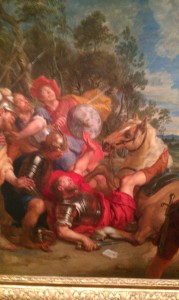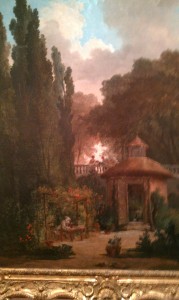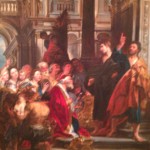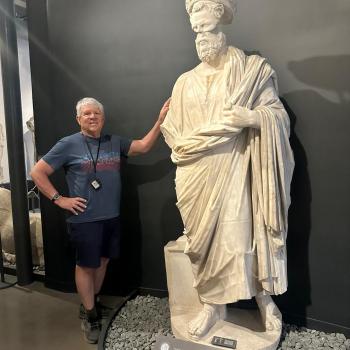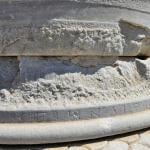One of the more popular scenes in religious art is the story of Paul’s U Turn on Damascus Road— the conversion scene. By the time Gaspar de Crayer, a Flemish painter, painting in the 1640s, did this rendering of the scene, there had been a long standing tradition of depicting Paul falling off his horse at this juncture. Never mind that the story told thrice in Acts (9, 22,26) says nothing of a horse. Different artists have of course painted the scene somewhat differently. de Crayer chose not to represent the divine, or even to include divine light striking Saul, which is common enough in the depiction of the scene. No, this painting focuses entirely on the impact of the intervention of Jesus in Saul’s life, an impact that was noticeable to and involved Saul’s entourage as well. For the record, what the Acts account say is that all saw a light and heard a sound, but only Saul saw a person in the light, and heard an intelligible voice speaking to him alone.
In our last religious painting from the Speed, displayed at the Singletary in Lexington we have a different sort of religious painting. Not a Biblical scene, but nonetheless a Christian scene.
The title of this painting is ‘A Hermit in his Garden’ and it was done by Hubert Robert, a French painter, in about 1790, one of the latest paintings in this collection. The Hermit is reading his Bible in a beautiful and quiet place. We might say he was having his quiet time. Next to the hermit is in fact his hermitage, and if you look carefully you will see some fruit picking girls who threaten to intrude on the hermit’s meditations. Robert the painter was also an avid gardener and designer of gardens and this shows in this particular painting. Once again the painter seems more interested in something else than the intended religious subject of the painting. At least, in the case of this painting which depicts a contemporary scene that Robert could actually have seen, we do not have to grapple with anachronism.
Religious art is important not least because seeing something is so much more stimulating to the brain than just reading about it or hearing about it. In an age before literacy, stained glass windows in cathedrals told the Biblical stories to those who could look but could not read. Learning, after all, is not just all about reading, and artists knew that every picture not merely tells a story, it conveys a world view, for every picture is already an interpretation of a particular scene, in this case from a religious world.


